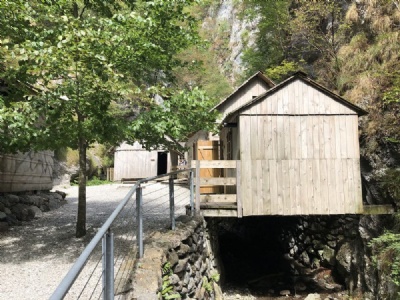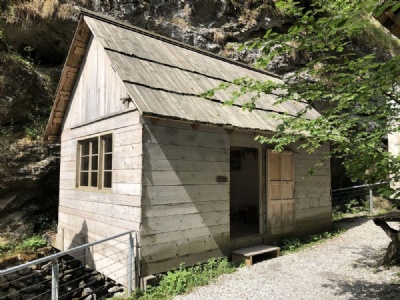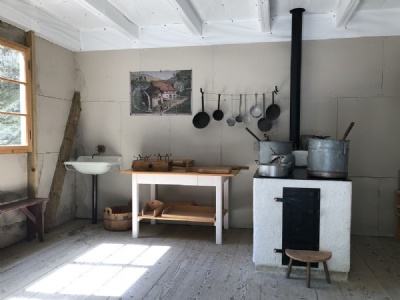Dolenji Novaki
After the Germans occupied Yugoslavia in May 1941, partisan units formed out of soldiers who had not surrendered or been captured by the Germans. Even civilians or prisoners of war who had fled from a prisoner of war camp joined partisans. The partisans lived in remote areas which the Germans out of fear stayed away from. Being captured by partisans was something the germans feared utterly. The partisans carried out sabotage against german supply lines and ambushed german personal, military and civilian.
The partisans set up camps in inaccessible areas which the Germans for reasons just mentioned avoided. A German soldier captured by partisans could count on no mercy. The same was true for partisans who ended up in German hands. Partisans in Yugoslavia and the Soviet Union were extremely feared by the Germans and therefore special partisan units were formed to seek out and destroy partisans wherever they could be fine. If the gemans had the slightest suspicion one being a partisan, that was enough to him, or her, executed.
The partisans consisted of a mixture of severed soldiers, prisoners of war, civilians and Jews. Both men and women were included and children under the age of 15. They built up small functional hidden camps which became their base. In addition to camps, smaller hospitals were also built where injured partisans, and others, could receive care. Such a hospital was set up in a deep valley called Dolenji Novaki, about five kilometers northeast of Cerkno. The hospital existed between December 1943 and May 1945 without being discovered by the germans.
The hospital was named Franja after Dr. Franja Bojc Bidovec who worked in the hospital virtually throughout its existence. The hospital consisted of about twenty barracks such as operating room, dressing room for the injured, dining rooms, kitchen, administration, x-ray room, shelters, dormitories etc. They were more or less self-sufficient but had of course contact with partisans in the area. There was a constant shortage of medicines and medical equipment, but they worked with what they had and improvised when necessary. About 600 people of different nationalities received medical care in the hospital.
Current status: Rebuilt with museum (2022).
Location: 46°09'00.27"N 14°01'38.48"E
Get there: Car.
Follow up in books: Batinic, Jelena: Women and Yugoslav Partisans (2017).













This was a site that I only learned about as late as 2022. I can’t remember exactly how I got in touch with it, but it immediately caught my interest because there were so many buildings. This made it concrete, unlike places where there is only a single ruin, foundation, obscure monument or nothing. Unfortunately, the hospital was more or less completely destroyed by heavy rain in 2007. But in 2010, the hospital was reconstructed and has since been open to visitors. From the car park it’s a 500 meter walk up the valley before arriving at the site. Although everything is reconstructed, it is interesting to walk around and all the buildings can be entered.